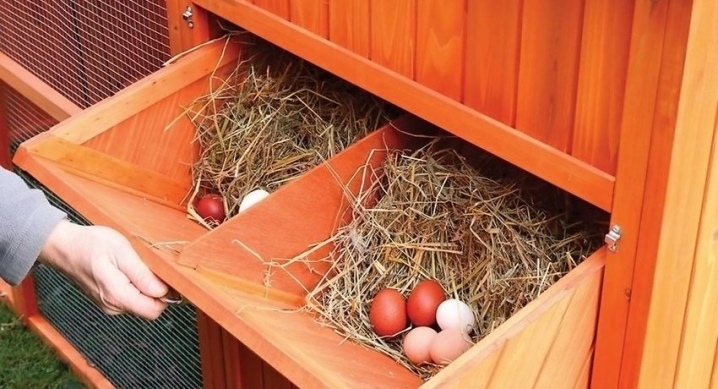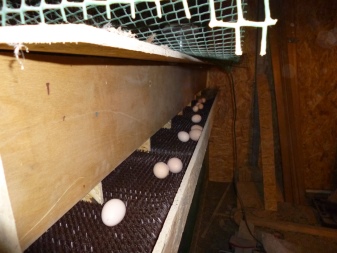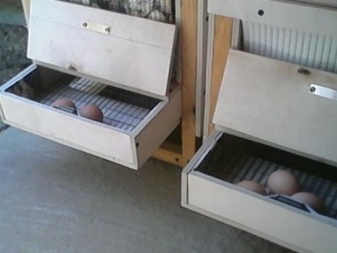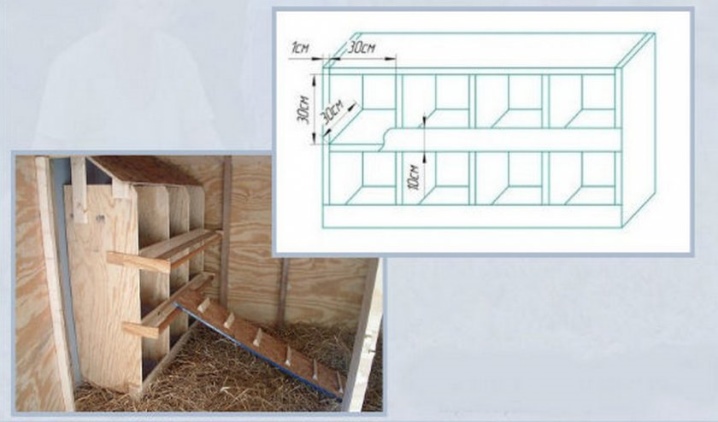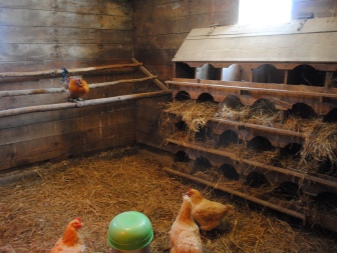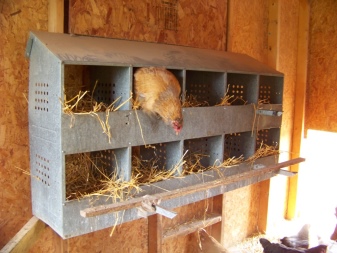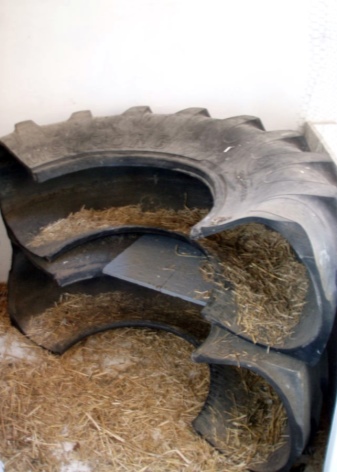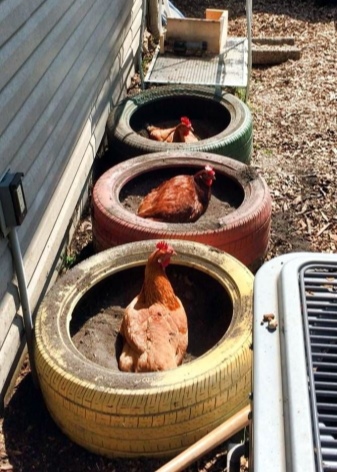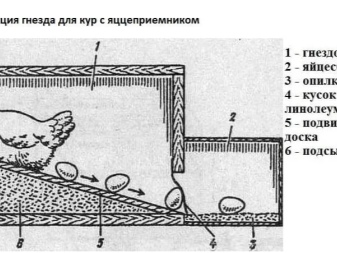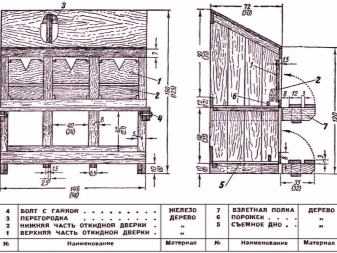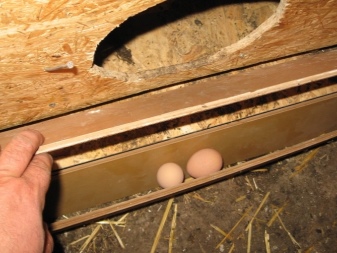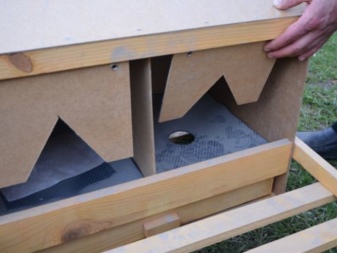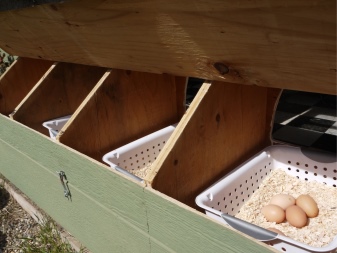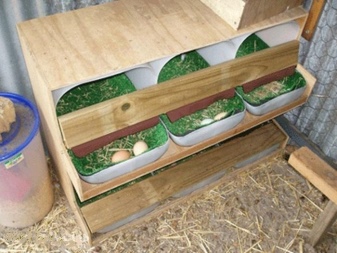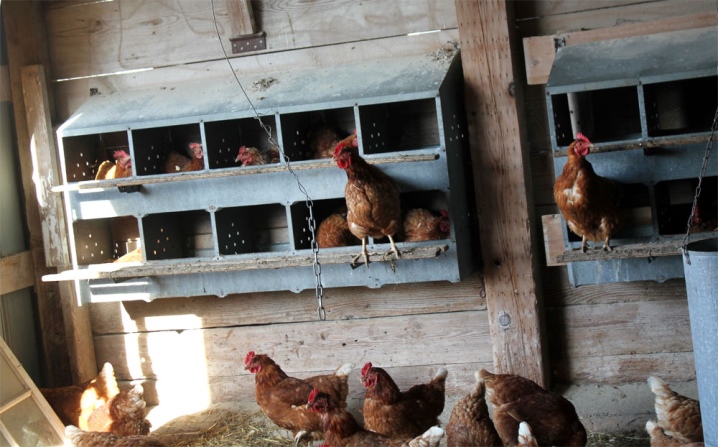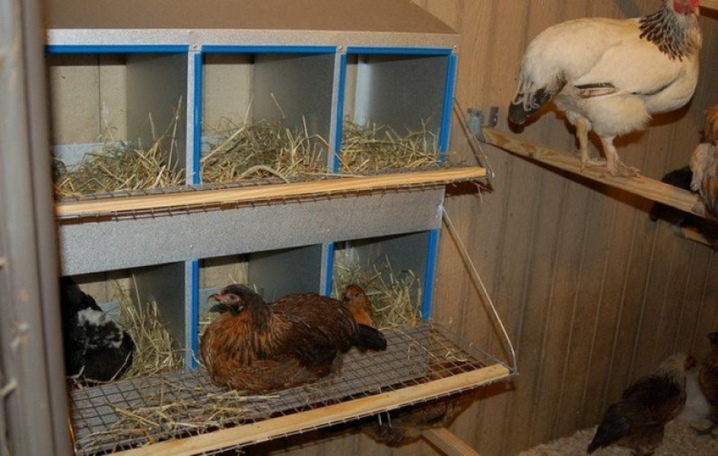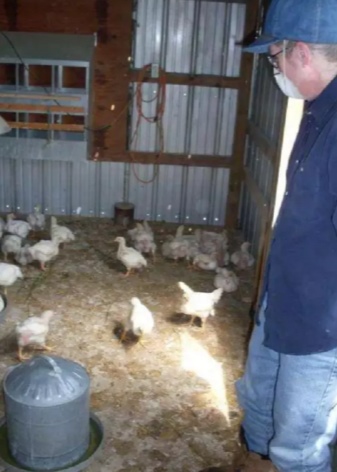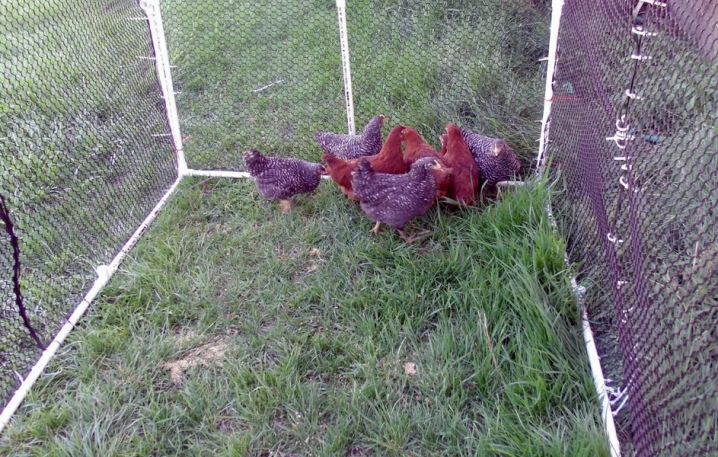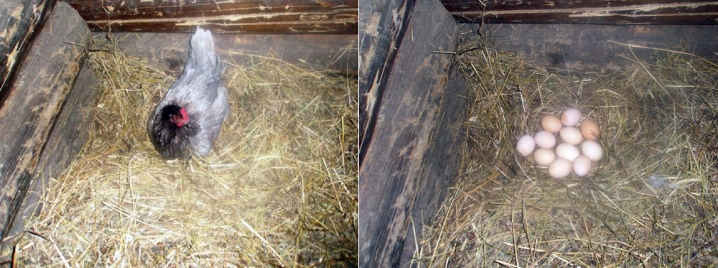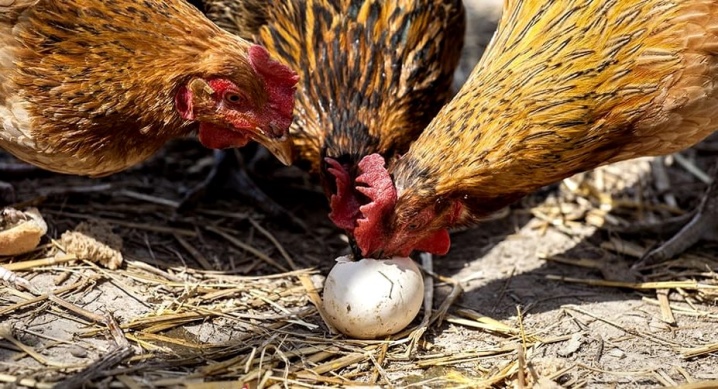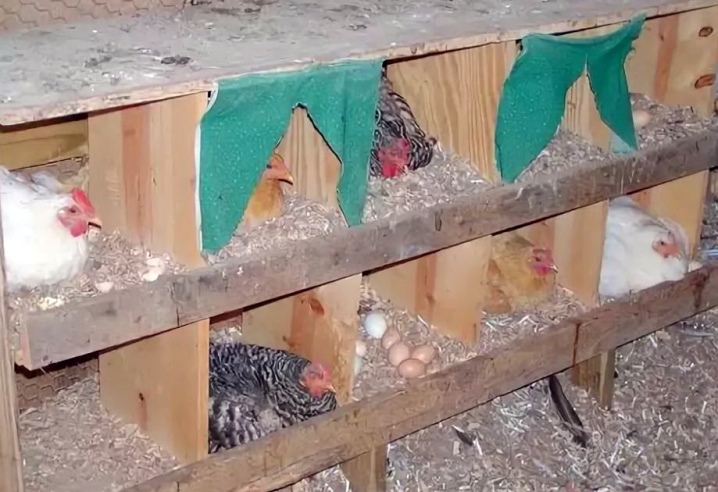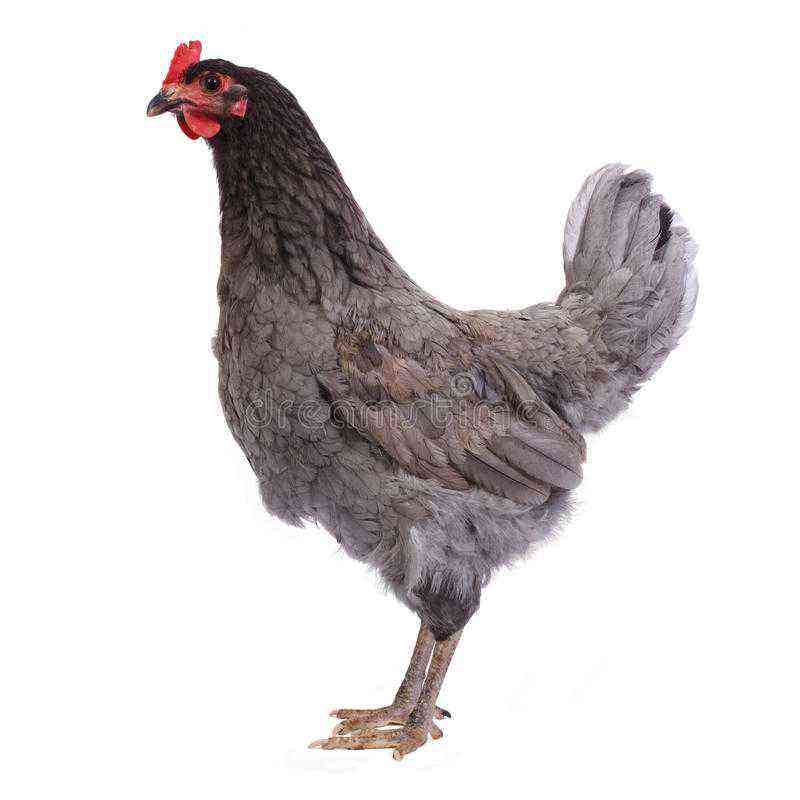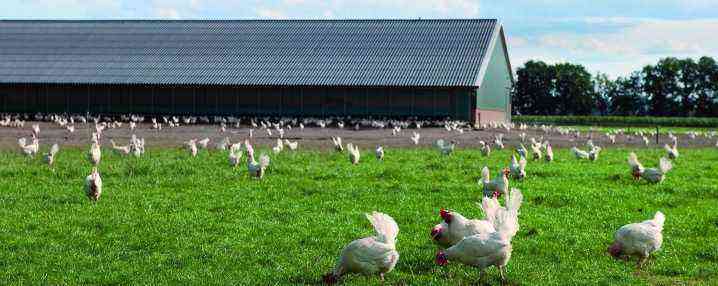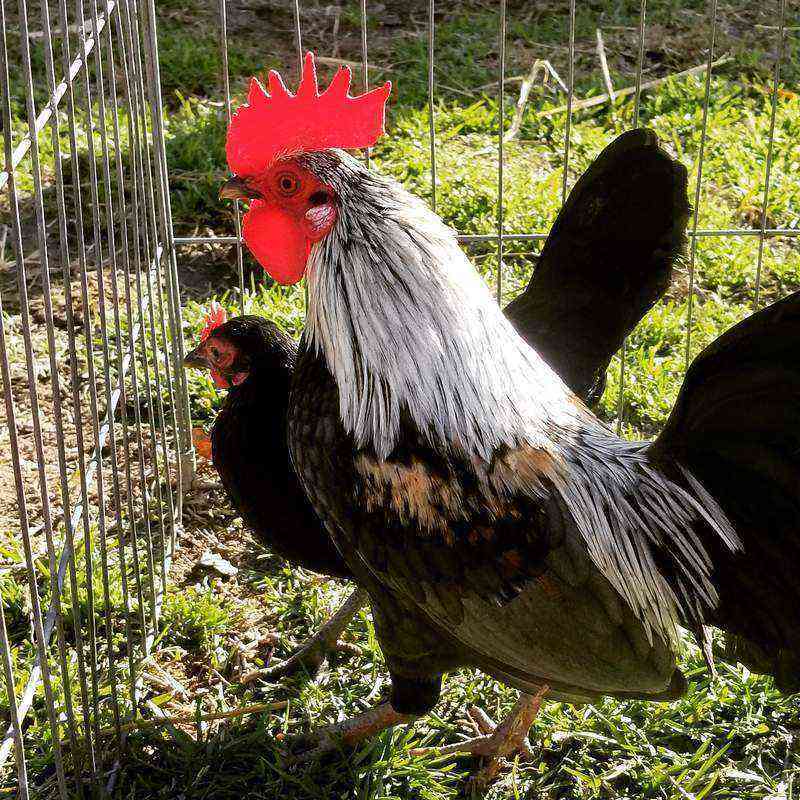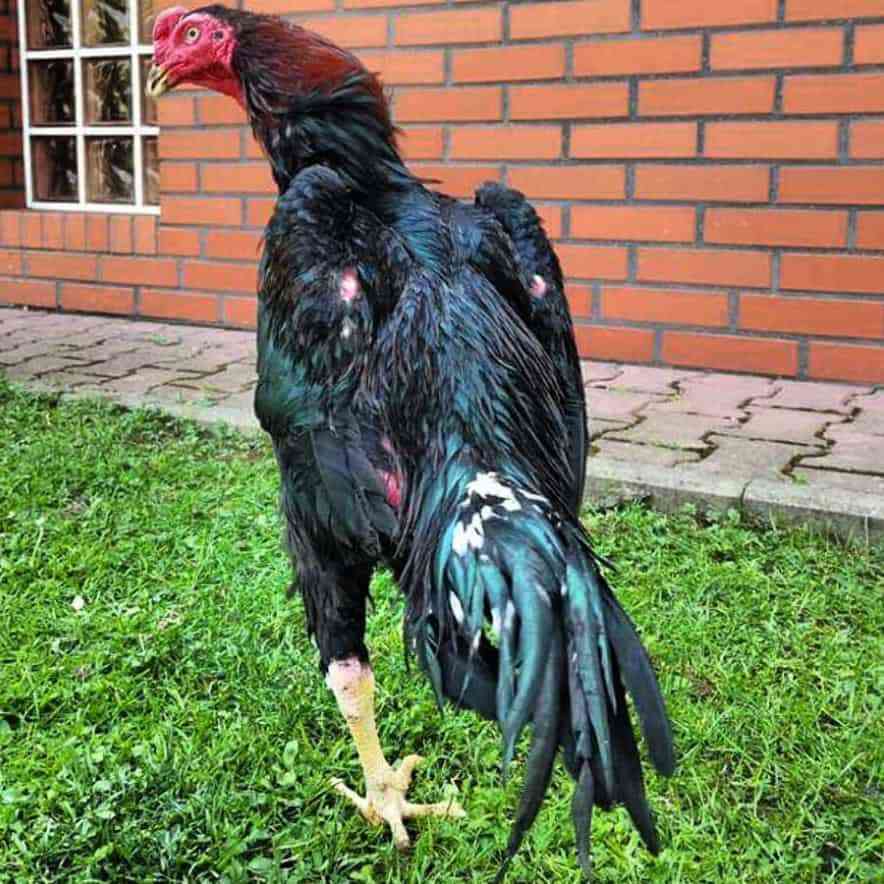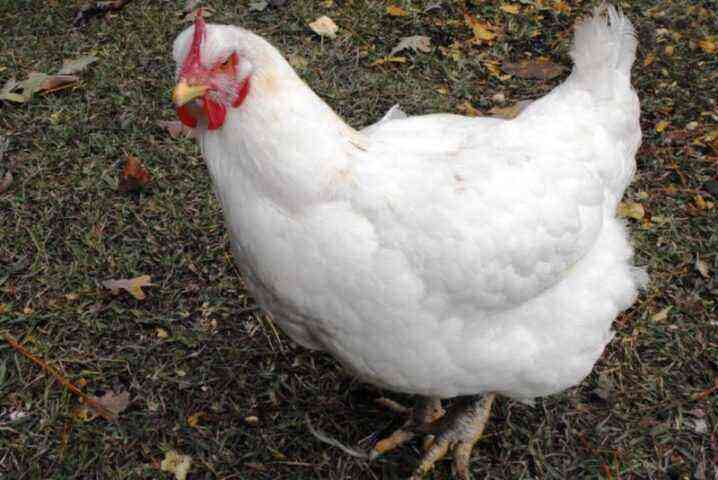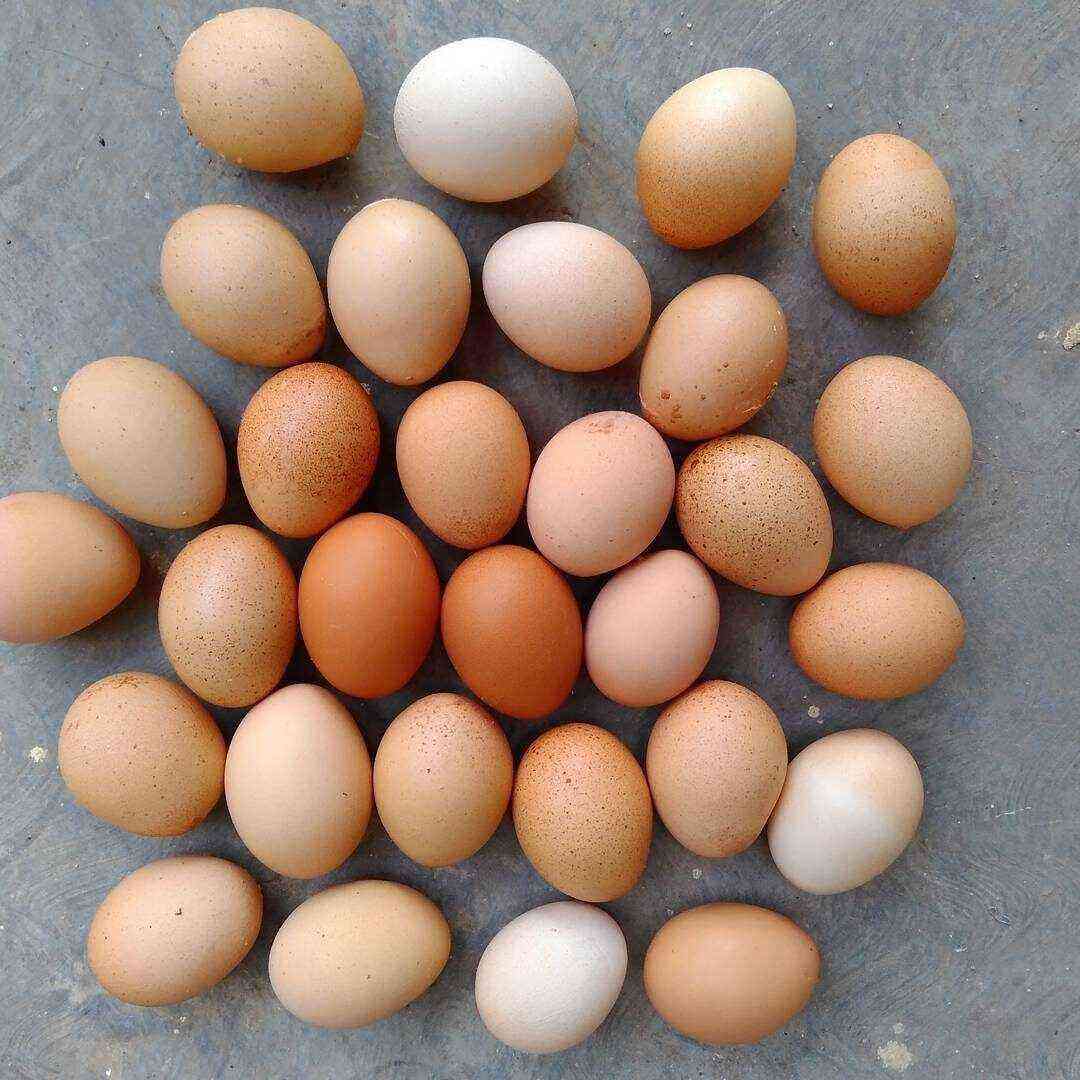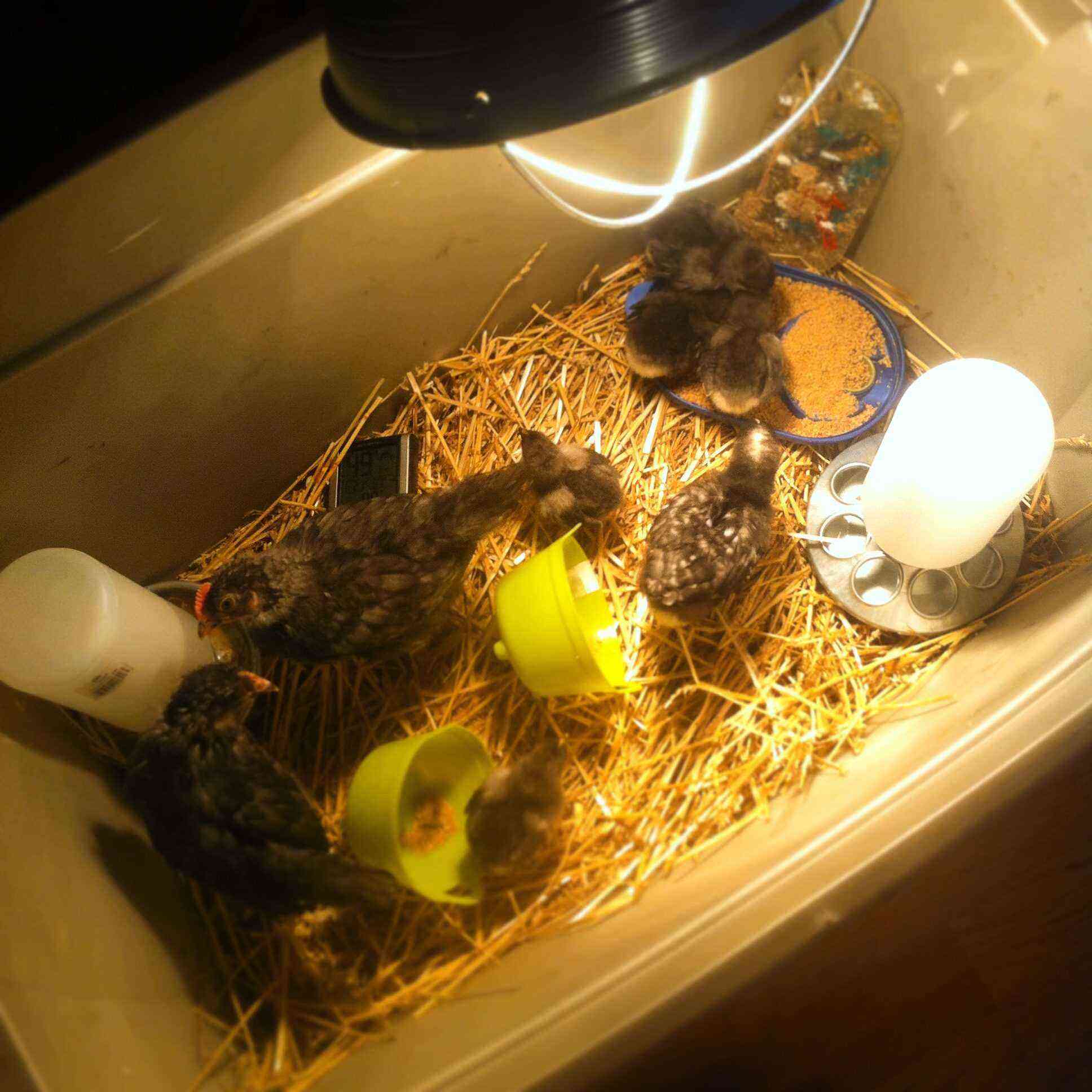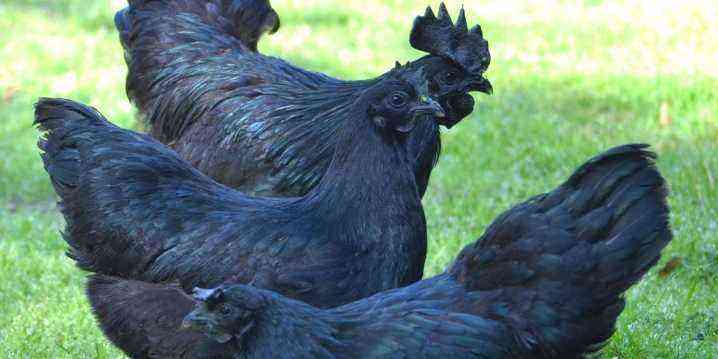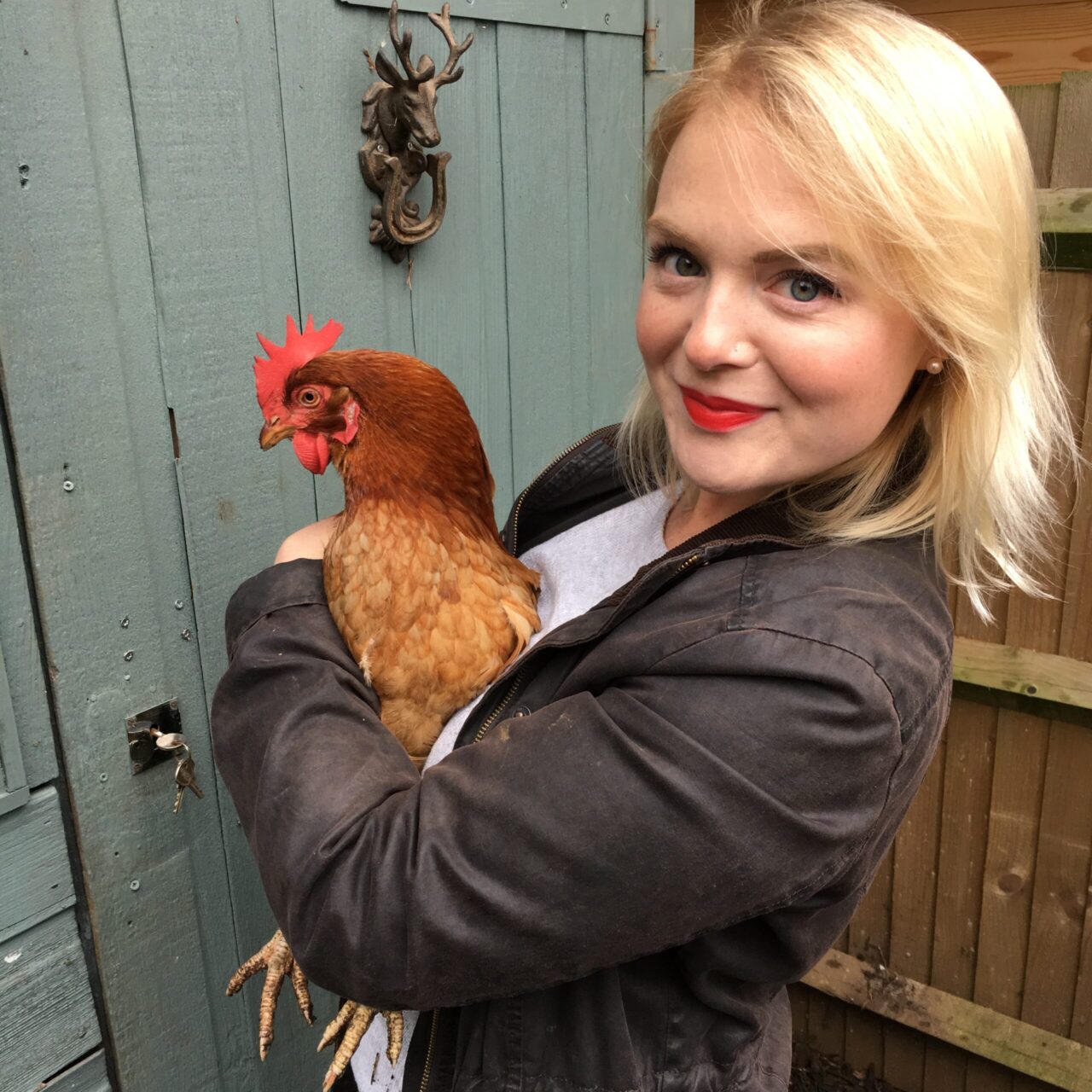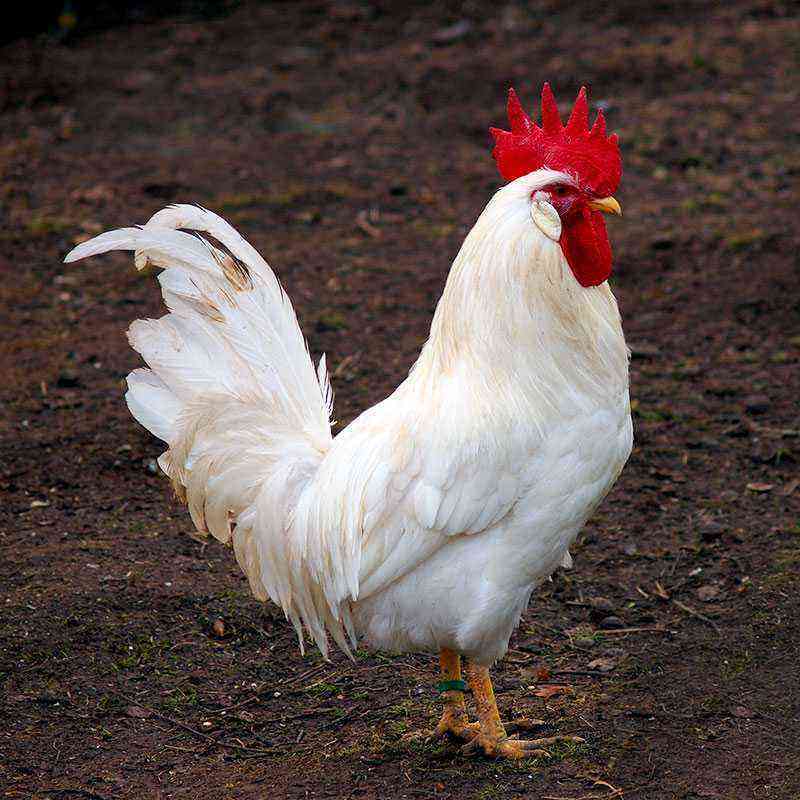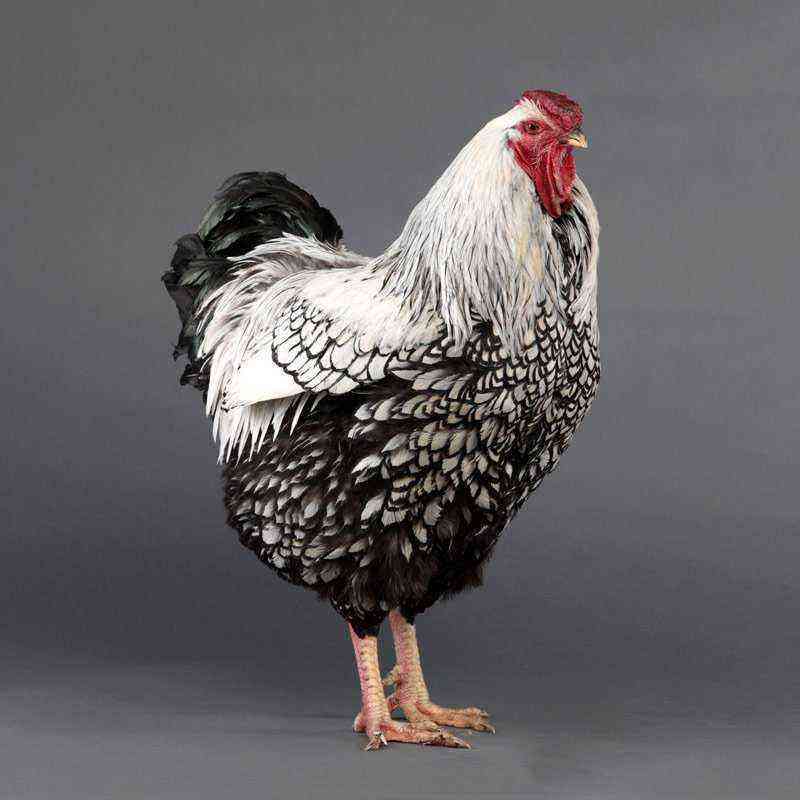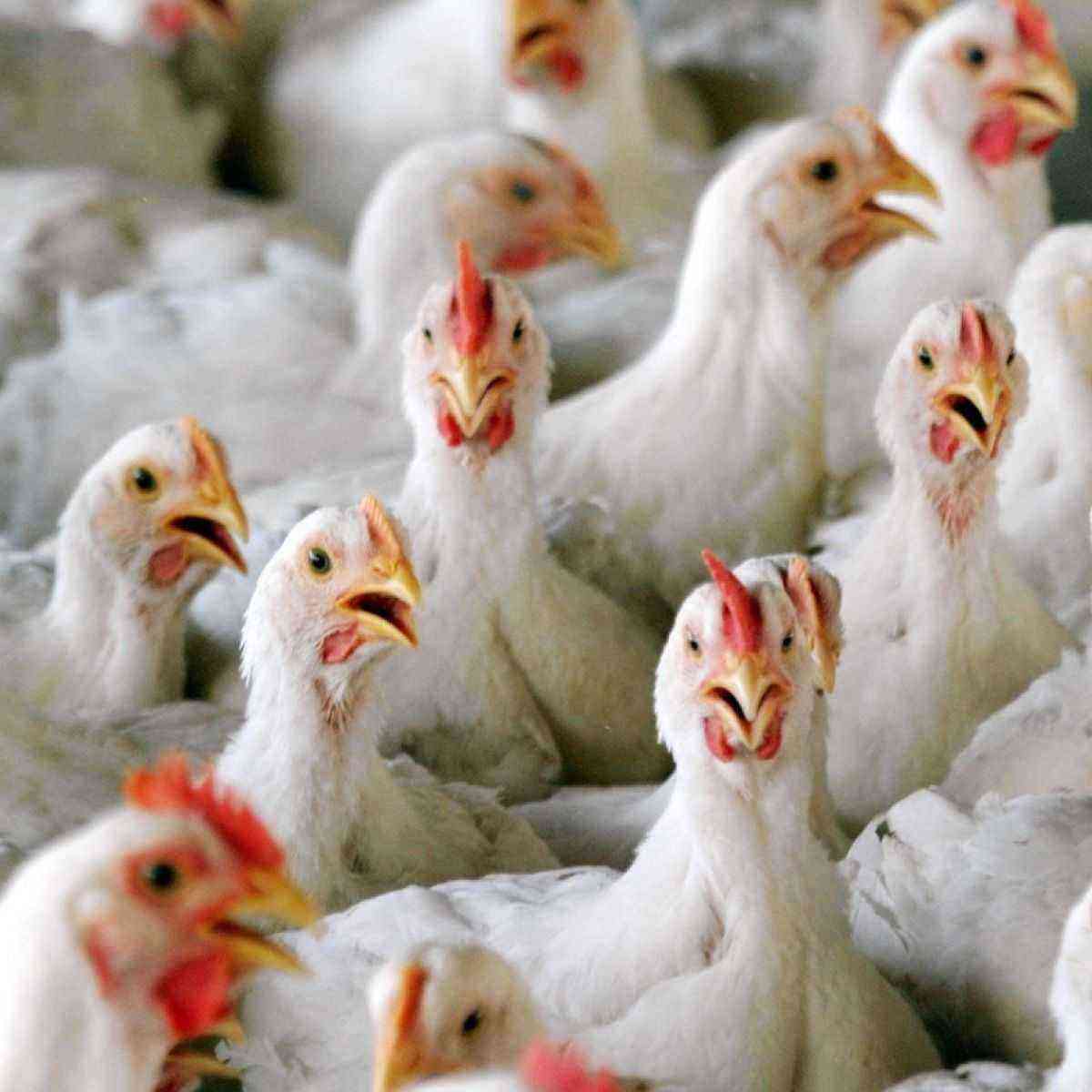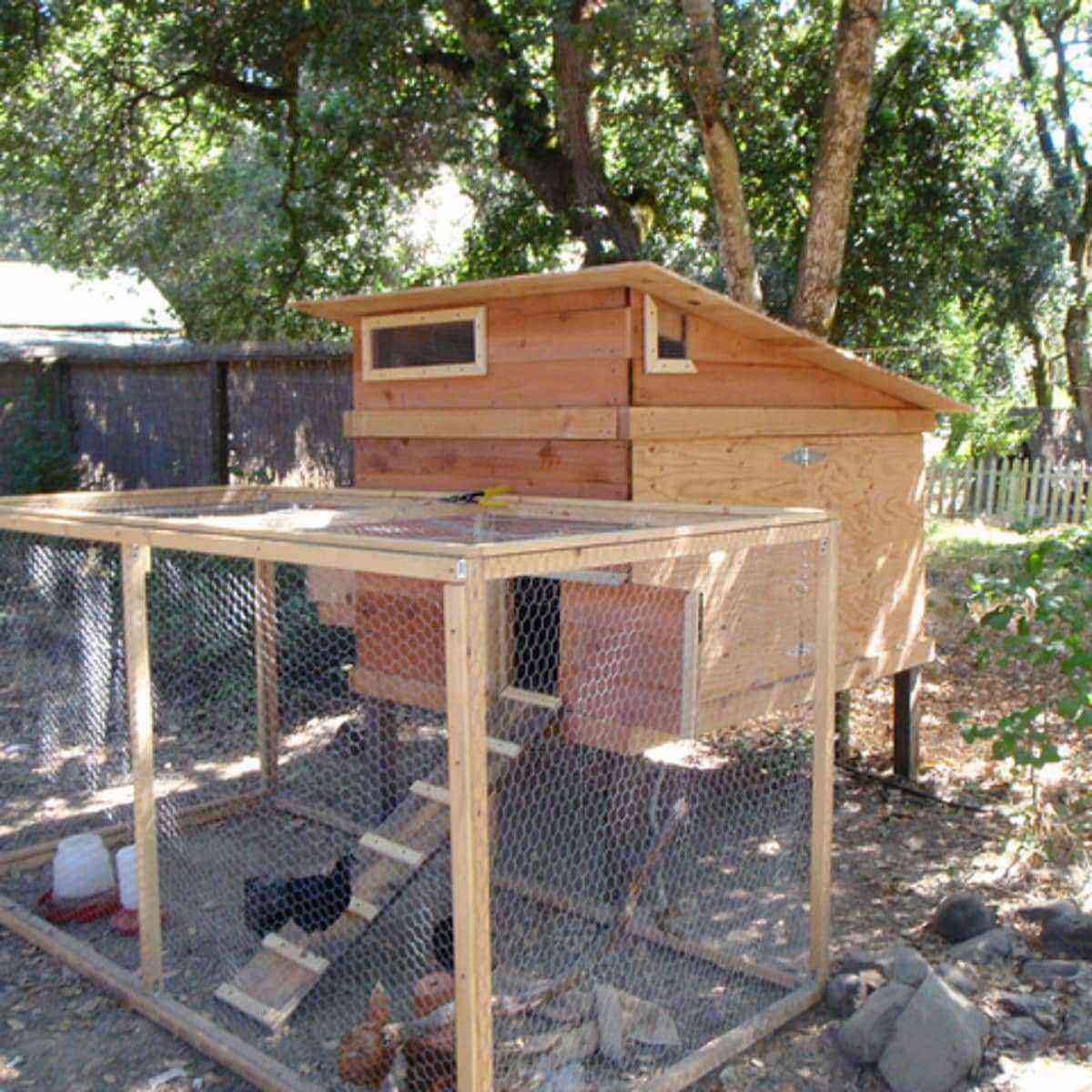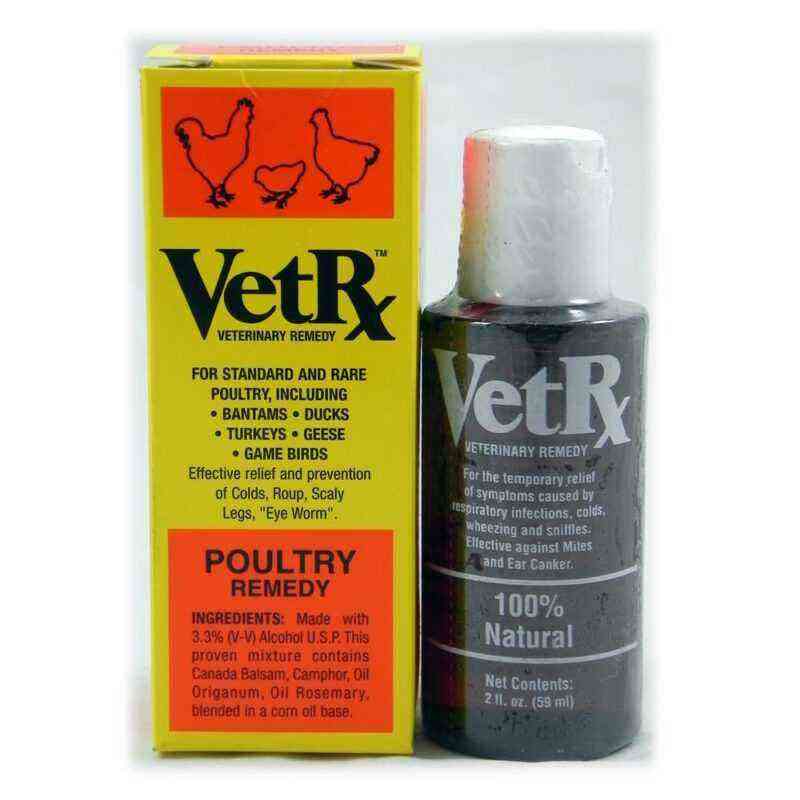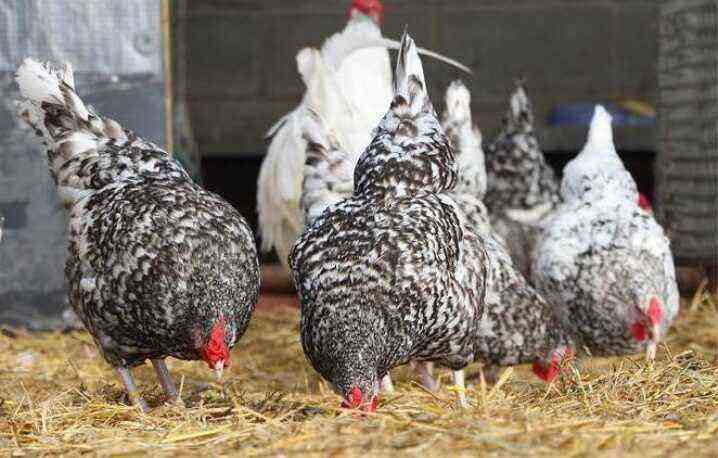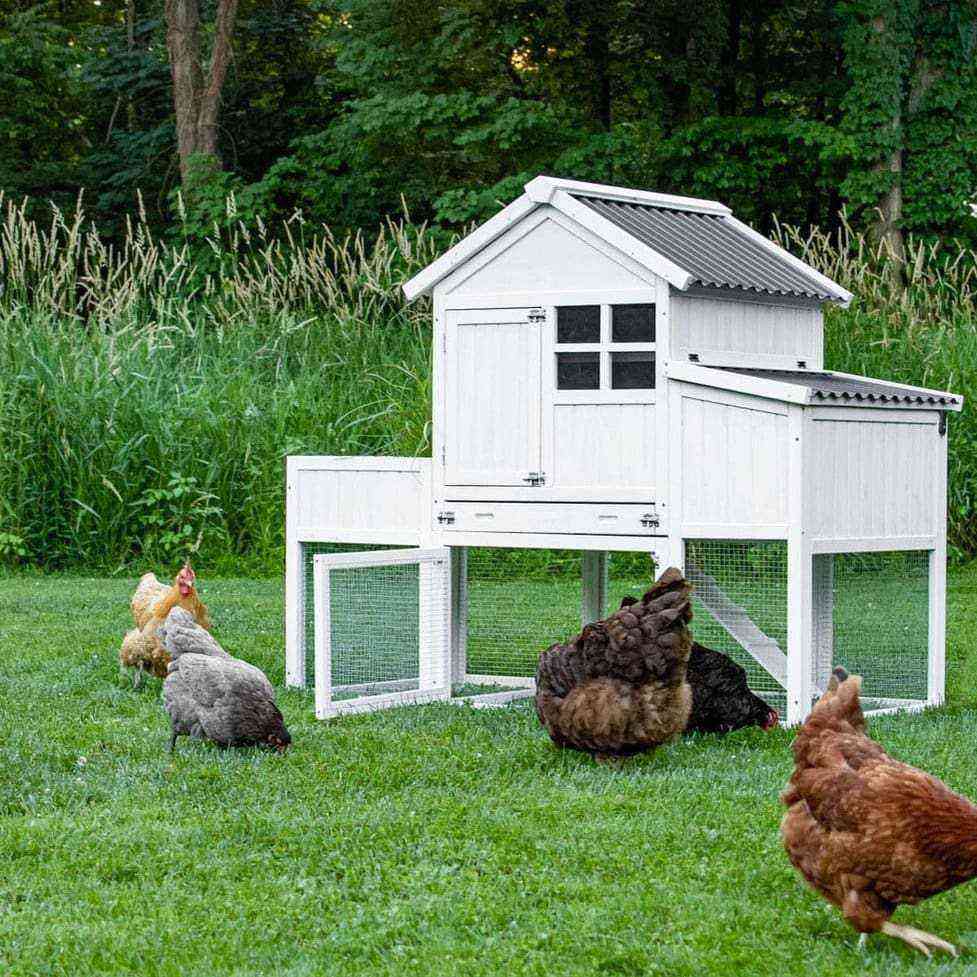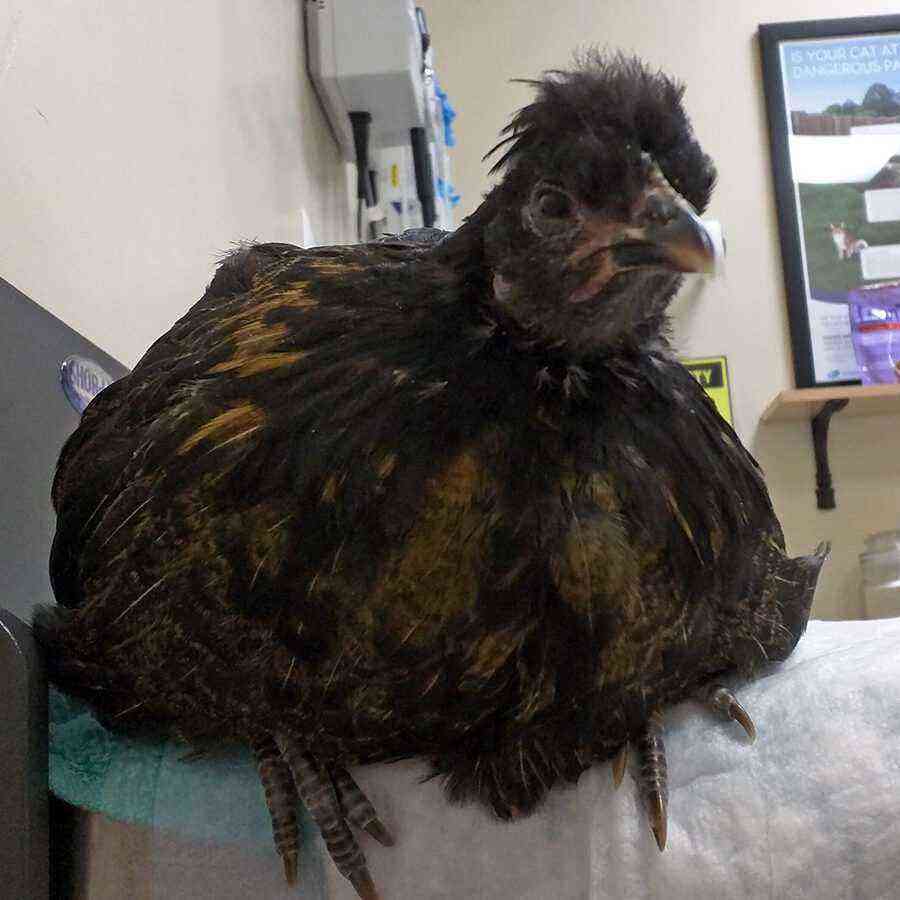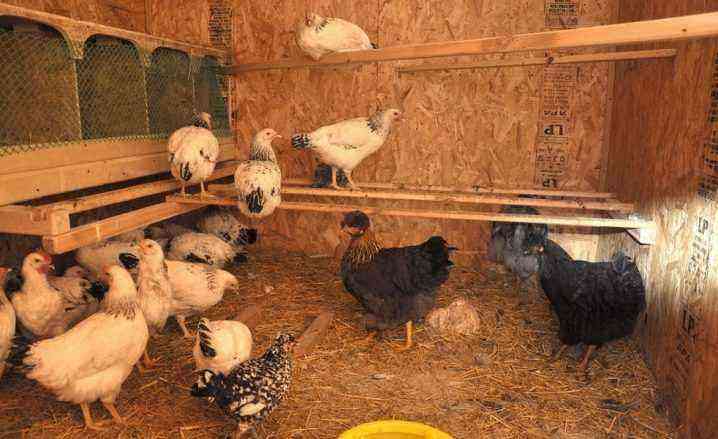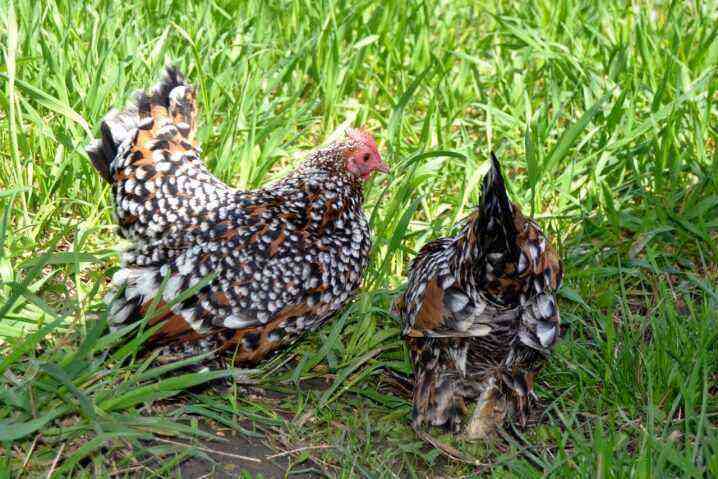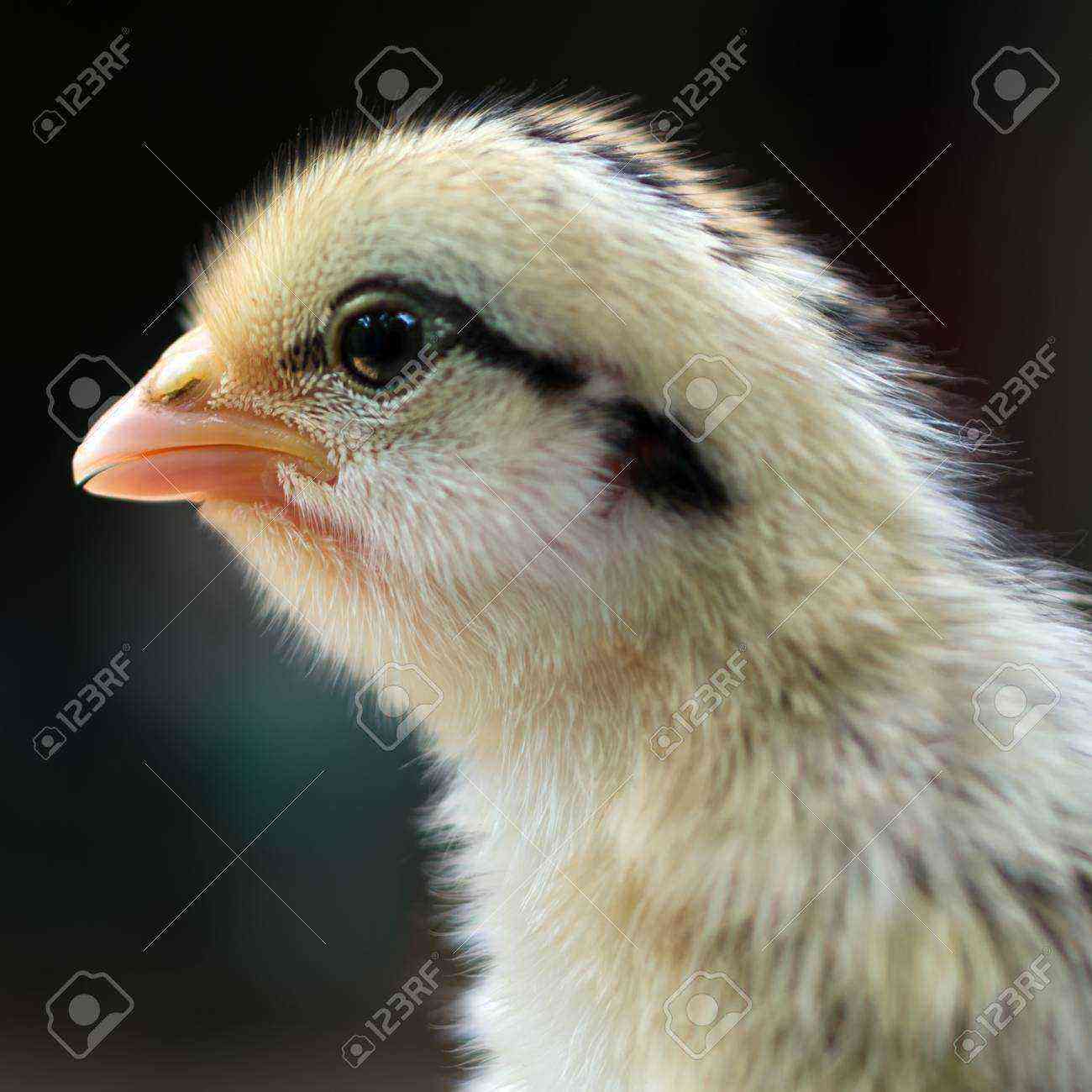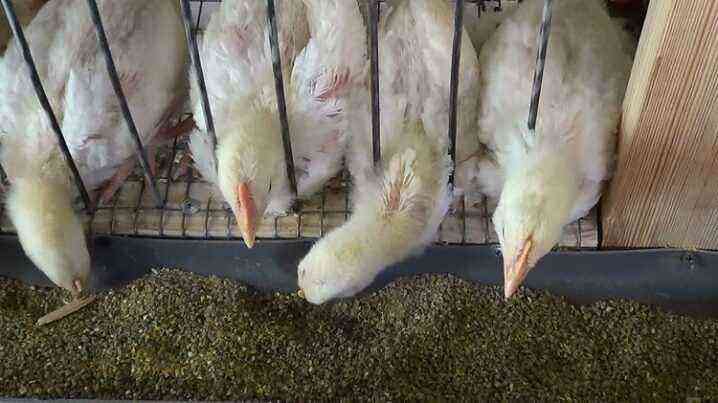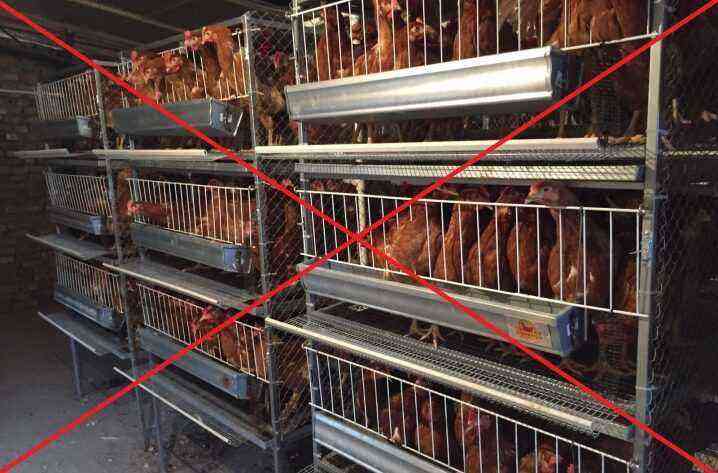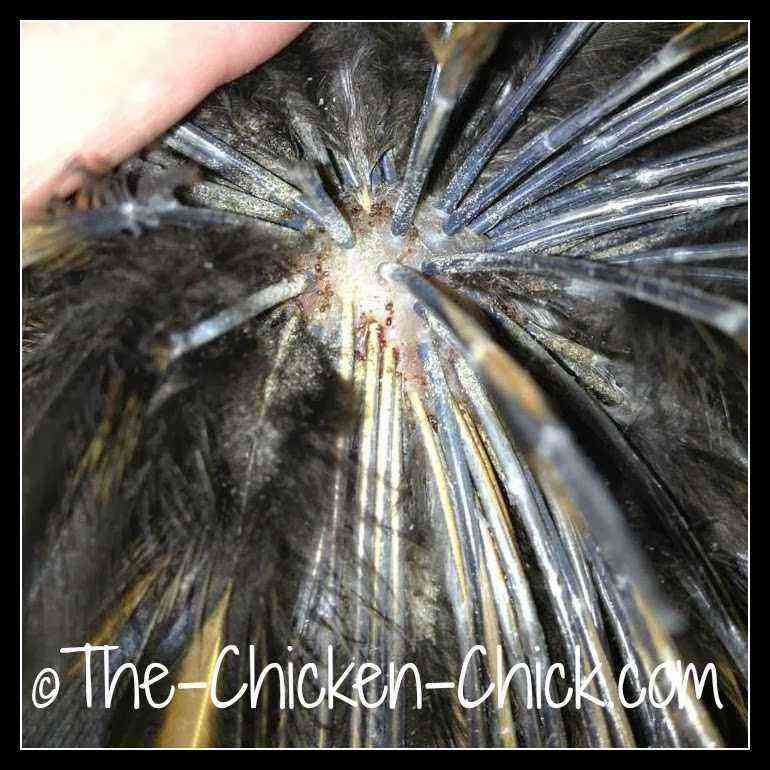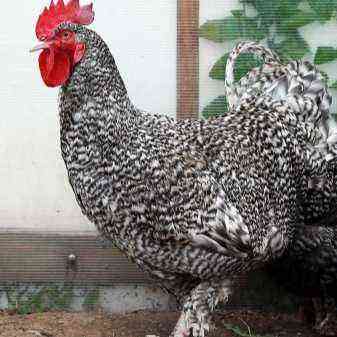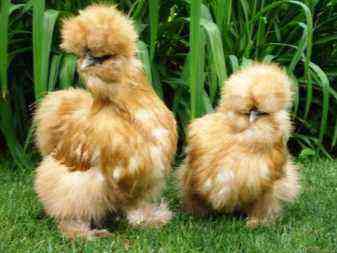Chickens of egg-bearing breeds are often planted in industrial and personal farmsteads. These are birds that are undemanding to special care, and the number of eggs is enough for sale. It is known that the productivity of chickens depends on age, but even a one-year-old individual can be sent for slaughter, while receiving about two kilograms of lean meat products.
Types
Chicken nests are an important part of any poultry house. Inside, they must be correctly located. In this case, individuals rush better without damaging the eggs. All existing structures are divided into two main types:
- regular boxes;
- nests with equipped egg collectors.
The simplest in arranging the first type of design. The external parameters of the boxes usually involve several cells for eggs. Laying hens for laying in such houses are specially trained. To do this, you need to lock the female inside for a while, until the habit of laying eggs in this place appears.
Complicated systems may have a different appearance. The basis of the device is a special system. The device allows the laid egg to immediately roll into a separate tray. As a result, the laying hen practically does not touch the product and cannot damage it. Nests are appropriate in farms where individuals are numerous, as well as in industrial enterprises. Designs increase the quality of mass collection of eggs. A variation of this species are nests with a second bottom. Here, the eggs also roll down, but instead of the egg collector, it is necessary to equip the second bottom, where the product is located until the owner takes it.
Good and cozy nests for chickens are obtained from improvised materials: buckets, tires, old basins. Chicken designs are often on sale, but their cost is high, and reliability is doubtful. In addition, ordinary boxes can be used as the basis of a homemade nest, which are fastened together and simply set to the desired height. Nests are not the only point important for the comfortable living of laying hens. For example, in the autumn-winter time, additional light and warmth are required. Households often use more powerful light bulbs, which leads to unforeseen fires. In addition, the constantly on lighting in the chicken coop leads to an increase in the nervousness of individuals, they stop rushing. The recommended length of daylight hours is 15 hours, the rest of the time the birds should rest. It is also important to provide a place for this.
Size and Quantity Requirements
Nests must meet certain sizes. The standards are as follows:
- height – 30×35 cm;
- width – 30 cm;
- depth – 30×35 cm.
The last parameter may vary according to the size of the chicken. Before entering the nesting place there should be a threshold about 5 cm high, and in the den itself it is important to provide a shelf on which the bird will fly up. If there are three to five chickens on the farm, one equipped nest is enough, since the bird will stay inside for no more than 90 minutes. Therefore, four nests are needed for 20 hens, and two or three are enough for 10-15 laying hens. It is desirable that the nests are located on several floors, while the lowest should be about 30-40 cm from the floor.
In winter, it is important to provide insulation for the bird house. The optimum temperature regime is + 7-8 degrees. If a heater is installed, it should not harm the bird. To prevent them from getting burned, a special box made of non-combustible materials is provided for the equipment. Round holes are made in the casing, which provide ventilation and the flow of warm air.
Nests can be from ordinary cages, and in each of them feeders and drinkers are mounted. Cells do not imply blank walls, but the floor must still be strong. In addition to cages, ordinary cardboard boxes, the bottom of which is lined with sawdust and straw, are often used as nests in households.
Old rubber wheels can serve as excellent materials for a homemade layer house. Products are fastened in width, and for the convenience of the chicken, a flat bottom is equipped. The resulting product is suspended or installed in the dark edge of the house. To strengthen the nest, supports made of bricks or nails are used, with which it is attached to the wall. Let’s take a closer look at other homemade nest options.
How to do?
Simple nests can be made from a plastic or wooden box. Such products can be borrowed in stores that sell fruits and vegetables. The main disadvantage of such structures is not quite suitable sizes, which means that the females inside will not be very comfortable. In addition, the plastic product may be too damp, the chickens will simply ignore it. Tiered chicken houses are made of fiberboard or plywood. The boards taken for the base are treated from chips. To make everything work out right, it is better to take ready-made drawings, and if you have the skills, you can consider numerous original ideas.
Experts advise starting the construction of a multi-tiered structure from the stairs. Then the boards or plywood are sawn, according to the given parameters. Next, the box is assembled, and the boards are installed inside and serve to delimit the space. A bar is mounted on the front of the box, which will play the role of a threshold. The nut will keep the litter and eggs inside. The finished structure is placed at a low height from the floor and not close to the wall. A ladder is attached to the boxes, which is needed for the comfortable movement of birds.
An improved version of the nest suggests a double bottom. The upper bottom must be strengthened at a slope of 5-13 degrees to the back wall. There should be a good gap between the bottom and the wall, in which the egg should fit. The bottom tray is about 10-15 cm longer than the nest box. This will ensure that the eggs are collected without problems. The inside of the pallet must be made of soft material, and a threshold must be provided in the front wall. The part is tightly fixed to the main structure and serves as a collection for a dietary product. Eggs in such nests remain intact, the hens do not have time to stain or peck them.
A nest with a container has similar functions. It is easier to equip it with your own hands, since it is enough to cut a hole in the main box into which the egg will be placed. A small container is placed down under the hole, which is recommended to be pre-sheathed with a soft cloth. Innovative development increases the productivity of poultry, improves the quality of eggs. Nests made from improvised materials are distinguished by low cost. It can be buckets, baskets. The main conditions for this are the purity and integrity of the items used.
For example, a convenient option for chickens would be an ordinary plastic bucket, which for some reason cracked and is not suitable for its intended use. The bucket needs some modification. For him, you need a blank in the wall, which will serve as a fortification. One beam must be mounted to the wall, and the other two bars must be fixed to it, which will serve as a frame. The slats should securely hold the base of the bucket while serving as a perch for the chickens. The bucket is screwed to the perch parallel to the surface, sideways. The open part of the chicken house must be strengthened with a lid, otherwise the laid eggs will be on the floor, and the litter will also be there.
Some breeders use old pieces of furniture. The last option least of all needs additional arrangement, as it already has suitable shelves and drawers. For greater comfort of the birds, the containers are covered with ordinary curtains. Many experts advise building a metal nest, which will be more durable. More labor and cost to complete the task. For a homemade device you will need:
- galvanization;
- metal pipes;
- mesh or wire;
- Bulgarian;
- drill;
- screws.
To prepare structural elements, drawings must be drawn on steel sheets. If the bottom is mesh, then the walls are simply attached to it at a slight angle. The bottom of the wire must first be woven using pipes as the basis. The roof is attached to the walls, and an egg container is mounted to the bottom. It can also be steel, but it must be upholstered with a soft cloth.
Arrangement rules
When arranging a nest, it is important to take into account its convenience not only for chickens, but also for the owner, who will have to take care of the structure almost daily. Arrangement of nests for chickens consists in the correct manufacture and rational arrangement of places for laying hens. Basic rules to follow:
- the place should be dark;
- inside it should be warm, there should be no drafts;
- the bedding will need to be ventilated, so the best option for the bottom is from a reinforcing mesh.
Arrangement of nests on the ground or near the entrance is contraindicated. In the cold and damp, chickens catch a cold, egg production decreases, activity and appetite fall. The optimal height for placement is 30-40 cm from the floor, deep in the chicken coop. Vertical supports for nests are best equipped at a distance from the wall. If the chicken places are close to the wall, it will blow cold from it, which will create discomfort for the layers. The structure attached to the wall is not very durable. If chicken nests are made by hand, you need to make sure that there are no defects inside. Layers can be injured by protruding nails, poorly cleaned surfaces, uneven protruding edges.
For the arrangement of the laying nests themselves, it is better to use sawdust than hay. Chickens easily scatter this component around, which makes a mess in the chicken coop. At the same time, the comfortable environment is disturbed, the inhabitants themselves begin to experience stress. A stressful situation leads to aggression and injury to birds. In order to avoid losses in livestock, it is necessary to provide not only timely care, but also a comfortable perch. Rounded pieces of wood or ordinary bars that are left over from the construction site will come in handy for it. There are many design options:
- along the walls;
- chaotically, at different heights;
- portable.
The latter are considered the most convenient to care for. Under practical portable structures, it is easier to clean the surfaces, and if necessary, they can be rearranged to any more convenient place. For one individual, it is necessary to take into account a third of the space on the crossbar. The optimal height is 0,6 meters, and the correct distance is about two meters.
Care
Caring for nests is extremely easy. Let’s take a look at some of the must-haves.
- Regular cleaning. The filler is changed as it gets wet, and the eggs are taken in a timely manner.
- Disinfection. It would be nice to accompany the change of filler with disinfectant treatment. This procedure should be weekly.
- Fumigation with smoke bombs. This is necessary, as harmful pathogens multiply rapidly in poultry houses. To exclude contamination of the nest and all parts are wiped with a solution of bleach. After processing, the room must be well ventilated.
- Timely maintenance. To avoid injury to birds, check nest attachments at least once every three months.
Please note that if chickens ignore the constructed structure, then they have special reasons for this. Errors must be corrected in a timely manner. If there are no errors, perhaps the young laying hen just needs to be taught to the nest. For these purposes, it must be closed in the nest for one or two nights. You can also place an egg laid by another individual inside. You can also find an item that will be suitable in shape. It is recommended to place feathers and fluff in new nests, which will attract the attention of birds. Birds may refuse nests, as parasites, mold and dampness disturb them inside.
Useful Tips
Domestic eggs are a healthy and environmentally friendly product. So that he is always in abundance, a bird is bred, but sometimes it is not possible to get an egg from it. The main reason for the unpleasant surprise is the pecking of this product by the birds themselves. Previously, it was believed that birds spoil eggs only because of poor care. At the present stage, the causes of pecking are understood as a small amount of space for walking, a lack of plant components in the diet, and a lack of calcium in the body of individuals. The latter phenomenon is considered almost the main drawback in bird feed.
Poor quality food, by the way, will serve to further actions that lead to the search for delicious food. Eggs are often the same. Even the location of the nests at a very close distance leads to the fact that the individual simply throws eggs into the individual, which are then eaten by other chickens. Experts recommend culling chickens that have started to mischief in their own chicken coop. It is believed that due to their nature, such individuals often deliberately crush eggs. To accustom such a chicken to rush normally is not possible. However, private laying hen owners suggest using various folk methods.
Of the popular ways, one can note this – feed the chicken with mustard. To do this, you need to take a small nail or other sharp object with which you can make holes from the ends of an ordinary egg. All contents are removed, and ordinary dry table mustard is poured into the empty shell. The object must be placed in the nest, and if it is eaten, the bird completely abandons the idea of pecking other eggs. The bird will definitely not like the taste of mustard.
Egg-like objects placed in the nest can also cause the eggs to stop pecking. A sick beak or head will eliminate the habit of pecking eggs. From humane advice, there is a way that involves adding protein supplements to the feed. It can be fish meal, boiled eggs crushed together with the shell. A darkened nest, closed with a curtain, will help to keep the dietary product, since the bird simply will not see it. A limited view of neighboring nests will also help in excluding pecking of other people’s eggs. The attention of a bird can be attracted by some extra things in the nest: garbage, straw. Remove the excess so as not to provoke a curious creature to peck the egg.
Timely cleaning of nests is recommended as a preventive measure to prevent pecking of a useful product. Another measure may be the constant employment of the bird. For example, individuals can be occupied by pecking apples, cabbage, hanging on a rope, raking compost. Chickens are highly active, so they need constant employment.
How to make a nest for chickens with your own hands, see the following video.
